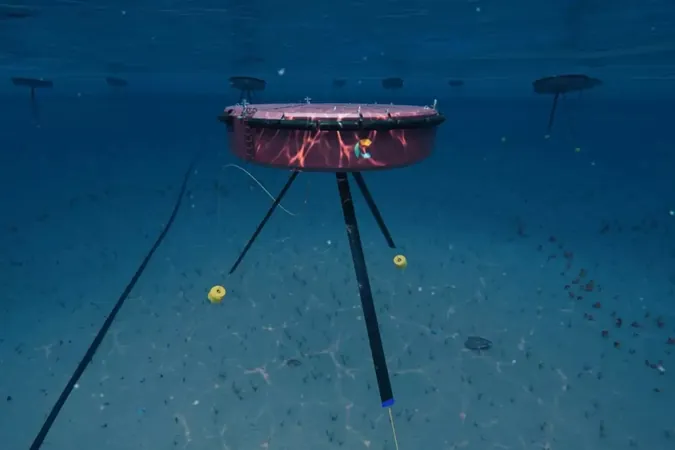
Revolutionary Wave-Powered Flying Saucer Could Transform Global Energy Landscape: Is This Wave Energy's Time to Shine?
2024-09-28
Introduction
In a fascinating twist on ancient mythology, Carnegie Clean Energy's innovative CETO system is not just a nod to the sea goddess Ceto, but a groundbreaking technology set to revolutionize the way we harness energy from the ocean's waves. Unlike traditional methods that utilize buoys and rafts, CETO features a unique submerged, flying saucer shape designed specifically to convert wave energy into clean, grid-ready electricity.
Recent Developments and Support
Recently, Carnegie Clean Energy received a significant boost with a $1.3 million grant from the U.S. Department of Energy, enabling further testing of its marine energy production capabilities. This funding could pave the way for wider adoption of wave energy technologies, marking a major step forward in our global transition to renewable energy sources.
How CETO Works
CETO operates on a simple yet effective principle: it captures the energy produced by waves as they move in circular motions. The floating unit sways with the water, employing internal belts that activate generators to produce electricity. Moreover, advanced artificial intelligence manages these underwater operations, ensuring optimal efficiency and functionality, even in challenging conditions.
Advantages of CETO Technology
What sets CETO apart is its ability to generate air-pollution-free electricity around the clock, no matter the weather. In stormy seas, the CETO unit can submerge below the surface turbulence, continuing to operate unhindered. With thousands of hours of successful testing under its belt, this technology positions itself as a viable and promising contributor to our energy needs.
Global Shift Towards Renewable Energy
As the world gradually shifts towards more sustainable energy solutions, the United Nations notes that approximately 29% of global electricity is already sourced from renewables. Intrigued by its vast potential, the U.S. Department of Energy estimates that wave power could feasibly meet up to 60% of the United States' electricity demands alone.
Future Concepts and Innovations
The vision doesn't stop there. Pioneering energy developers are exploring concepts involving offshore artificial 'energy islands,' where captured wave and wind power could be efficiently transmitted to coastal regions. This groundbreaking approach not only enhances energy accessibility but also assists in combatting the growing concern of climate change.
Importance in Climate Change Mitigation
Additionally, as world leaders strive to reduce harmful emissions linked to climate change, technologies like CETO become increasingly critical. NASA has drawn connections between elevated sea temperatures and the rise of marine heat waves that negatively affect ecosystems, particularly coral reefs.
Scalability and Future Potential
Interestingly, CETO's developers highlight its scalable and modular design, which allows for easy adaptation and deployment across various marine environments. Some recent insights even suggest CETO's potential for desalination, providing fresh water while generating electricity.
Conclusion
As Carnegie Clean Energy advances its CETO technology, it seems poised to bring us closer to a future where energy is harvested from the ocean's 'consistent rhythm.' This innovation might just be the breakthrough we need to shift towards a cleaner, more sustainable energy landscape—could this be the dawn of wave energy's golden era?



 Brasil (PT)
Brasil (PT)
 Canada (EN)
Canada (EN)
 Chile (ES)
Chile (ES)
 España (ES)
España (ES)
 France (FR)
France (FR)
 Hong Kong (EN)
Hong Kong (EN)
 Italia (IT)
Italia (IT)
 日本 (JA)
日本 (JA)
 Magyarország (HU)
Magyarország (HU)
 Norge (NO)
Norge (NO)
 Polska (PL)
Polska (PL)
 Schweiz (DE)
Schweiz (DE)
 Singapore (EN)
Singapore (EN)
 Sverige (SV)
Sverige (SV)
 Suomi (FI)
Suomi (FI)
 Türkiye (TR)
Türkiye (TR)